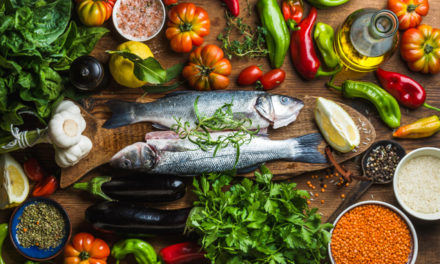Have you ever read a food label and thought…I have no idea what this is? Truth bomb: your body probably doesn’t either.
There are so many things you have to be aware of these days. Some of these include: dyes, preservatives, hidden sugars, natural flavors, isolated proteins that act as msg, seed oils, serving size of sugars, pesticides, and more.
Companies also like to trick us by using “healthy” taglines and words like natural, organic, dairy-free, gluten-free, vegan, vegetarian, etc.
For example, you can unwittingly buy “organic” peanut butter, hummus, guacamole, or roasted nuts and later find out they’re laced with canola oil, a highly inflammatory Omega-6 seed oil.
So, let’s talk about five things we need to look for when reading our labels:
- SUGARS
- PRESERVATIVES
- DYES
- HIDDEN MSG
- SEED OILS
HIDDEN SUGARS
Sugars are everywhere. Recent studies confirm that Americans are, on average, consuming 17 teaspoons of sugar every day. That is 57 pounds per year.
Sugar is an anti-nutrient. It contains no vitamins of its own and instead leeches them from your body in order for digestion to occur.
So, how do you limit your sugar intake?
To determine how many teaspoons of sugar are in a product, you need to use the following equation: 4 grams of sugar= one teaspoon of sugar.
Knowing this, you look at total sugars listed under carbohydrates. You then divide the total number of sugars by 4 to determine the amount of sugar per serving size. For example, if total sugars equal 15, then 15 divided by 4 equals 3.75 teaspoons of sugar per serving.
Sugar also hides in our foods. Anything that ends in “ose” is a sugar and anything that ends in “ol” is a sugar alcohol. For example: fructose, lactose, maltose, dextrose, xylitol, sorbitol, etc.
There are also the following hidden forms of sugar to look out for: corn sweetener, corn syrup, fruit juice concentrate, high-fructose corn syrup, malt syrup, sugar syrup, Florida Crystals, evaporated cane juice, corn syrup solids, barley malt, agave nectar, rice syrup, caramel, panocha, muscovado, molasses, treacle, and carob syrup.
PRESERVATIVES
While Preservatives help food stay fresh longer, they are also linked to cancer and hormone disruption.
I recommend avoiding the following preservatives: nitrites (nitrates and nitrosamines) added to processed meats; BHA & BHT added to cereals, hot dogs, candy, and so on; sulfites; sodium benzoate; potassium benzoate, benzene, and potassium bromate.
DYES
Dyes are notoriously troublesome for those with behavioral disorders like ADHD and autism. However, did you know they’re also toxic to the human body and contain carcinogens and cancer-causing substances?
Some of the most common include: Red 40, Yellow 5, and Yellow 6; however, all colors and dyes contain carcinogens.
HIDDEN MSG
You’ve all heard that you need to avoid MSG, a flavor enhancer used in Asian cuisines. But did you know there are many forms of hidden MSG?
MSG is monosodium glutamate, one monosodium molecule added to the amino acid glutamic acid, which occurs naturally in many foods. Glutamate is also an excitatory neurotransmitter for which we have receptors in our gut and brain.
Normal healthy livers can break down amino acids that build up in the body; however, glutamic acid (glutamate) is more difficult to absorb and eliminate.
Excess glutamate causes neurons to fire as soon as it hits the receptors on the tongue, leading to neurotoxicity and systemic inflammation. Hello, addiction and cravings!
So how is excess glutamate ending up in our foods, and how can we spot hidden MSG? Simply put, protein processing! The hydrolysis and protein processing results in unbound glutamate, aka MSG.
Even if it says “No MSG” you still have to be vigilant. The FDA does not require MSG to be labeled unless the ingredient itself is 99 percent MSG.
In addition to any product that lists glutamic acid or glutamate, you also have to look out for the following hidden MSG:
- Yeast Extract, nutrient, or food
- Anything hydrolyzed
- Anything protein: textured protein, whey protein isolate, soy protein isolate, etc.
- Calcium or sodium caseinate
- Gelatin
- Vetsin
- Ajinomoto
And the following products that contain or produce MSG:
- Carrageenan (E 407)
- Maltodextrin
- Citric acid, citrate(E 330)
- Any flavors or flavoring
- Barley malt or malt extract
- Pectin (E 440)
- Soy sauce or extract
- Seasonings
- Bouillon
- Anything ultra-pasteurized
- Anything enzyme modified
- Anything containing enzymes
SEED OILS
Some fats are anti-inflammatory, like Omega-3 fatty acids, and others are inflammatory, like Omega-6 fatty acids. Our Omega-6:3 ratio is supposed to be 1:1; however, in America, it’s more like 40:1.
Seed oils were introduced in the 1920s as a cheaper option and as a means of getting rid of excess from processing cotton and other plants. Unfortunately, the introduction just so happens to coincide with the rise in coronary artery disease, obesity, and autoimmunity. These oils also oxidize at high heat, causing internal inflammation of the brain and body.
I recommend avoiding the following seed oils:
- Corn
- Canola
- Cottonseed
- Soy
- Sunflower
- Safflower
- Grapeseed
- Ricebran
- Rapeseed
- Vegetable
- Peanut
Instead, try cooking with and using products containing the following oils/fats:
High heat: ghee, grass-fed tallow, grass-fed butter, unrefined virgin coconut oil
Little to no heat: Extra virgin olive oil, avocado oil, hazelnut oil, and macadamia oil
This doesn’t mean limiting all of these items all of the time. It just means being more mindful when shopping and eating out.
The key takeaways should be:
- Focus on eating whole foods!
- Choose processed foods with five ingredients or less.
- Read your labels and shop at places like Sprouts and Thrive Market for better options!
By Audrey Stimpson, Nutrition Coach, CNFC
Audrey Stimpson is a Certified Functional Nutrition Counselor specializing in ADHD, autism, autoimmune, hormonal imbalances, and gut-brain health. For more info on optimizing nutrition, reach out to Audrey via email at audrey@audreystimpson.com, social media at @audreystimpson, and via website a 42 t audreystimpson.com.






